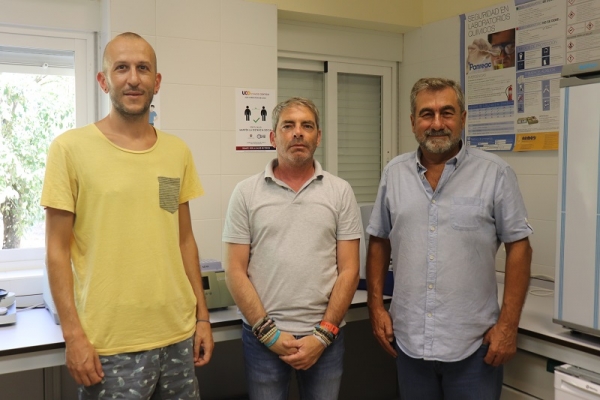An examination of the current distribution and origins of the European red deer, one of the main mammals on the continent, through their DNAentailed a journey across thousands of years based on the animal's current genetic situation. This is what a team of 25 people, coordinated by the Hunting and Fish Resources Research Unit (UIRCP) at the University of Cordoba, has done. Drawing on information from 35,701 genetic markers (SNPs) from each of the 736 deer in the sample, from all over Europe, the team was able to identify four main areas of deer distribution (Norway, Scotland, Spain and Central Europe), their differences, and confirm the uniqueness of those inhabiting the Iberian Peninsula. Due to the peripheral nature of this population, these deer have maintained greater genetic variation from the rest, which makes adequate management and conservation policies even more vital in their case.
The study, published in the journal Molecular Ecology, consisted of analyzing the current genetic structure of the populations to deduce the processes by which the different genetic lineages have spread geographically, forming the current structure, which is known as phylogeography. This has been possible thanks to genomic studies that have greatly expanded the information that can be obtained from DNA compared to the methods previously used. While DNA markers ranging from 15 to 30 In number were analyzed with previous techniques, this study used a tool developed in the United Kingdom for deer that allows for the observation of 50,000 genetic markers at specific points on the DNA, obtaining a more accurate image of the deer genome. Although these 50,000 points still pale in comparison to the approximately 3 billion base pairs they make up deer DNA, the study is an important step forward. Analysis of the complete genome sequence is also currently underway. These modern tools have also managed to confirm what the UIRCP team had already published in 2016 in relation to the existence of two deer lineages in Spain, these being well differentiated genetically and proceeding from ice ages, with one in the south-central Iberian Peninsula and another in the west.
Along with the Spanish ones, the team has identified other deer populations on the European continent: Scottish deer, and Norwegian deer, which are also peripheral like Spanish ones; that is, they feature more well-differentiated genetic characteristics, while those populations corresponding to central Europe are more homogenized, as they have mixed with each other.
A History of Distribution
The genetic differences identified by the study, together with those from previous studies that have analyzed mitochondrial DNA (a genetic material that, thanks to its periodic mutations, serves as a biological clock), the team has achieved a better understanding of how the current distribution of deer came about, over the course of thousands of years, with four main migratory waves that contributed to the uniqueness of Spanish deer and their relationships with the rest of the continent.
With northern Europe frozen, in the first two waves of distribution (one at the end of the Pleistocene, about 70,000 years ago, and the other before the last great glaciation, 22,000 years ago) the deer moved from their original location in eastern Europe to two others: one in the south of the United Kingdom (in an area currently covered by the sea) and another on the Iberian Peninsula, first to the west and then in the center.
Once the ice receded, the deer expanded into new territories to the north. About 10,000 years ago (in the Holocene), deer from the south of the British Isles migrated into Scotland, those from central Europe moved into Scandinavia, and those from southern France migrated into the center of the continent. The latter, during the late Holocene (last 4,000 years or so), mixed with each other.
In this way, the deer's four current distribution areas were established. Firstly, there is that of central Europe, and, secondly, the three peripheral areas protected by seas or mountains: Spain, Scotland and Norway, with the deer on the Iberian Peninsula being those which have remained isolated longest. "For 20,000 years, the deer of the Iberian Peninsula haven't mixed with the rest," says Juan Carranza. Hence, Spanish deer maintain their own physical characteristics, and their own mating calls, differing from those in other areas. In addition, due to those first two waves of distribution that the study cites, the deer most genetically similar to Spanish ones are Scottish, despite the fact that those in the center of the continent (including France, for example) are geographically closer.
A commitment to conservation policies
Although the Iberian Peninsula has, apparently, filled with deer on two occasions, giving rise to the current distribution, with two lineages featuring different characteristics between them, this does not mean that there has not been crossbreeding produced by proximity or human introduction. Therefore, the team endorses adequate management and conservation policies that preserve the uniqueness of the populations, both in peripheral areas of Europe, such as Spain, Norway and Scotland, and in the distribution areas of the two Spanish lineages. These two lineages "are not described as two different subspecies, but, genetically, they do have characteristics sufficient to make them worth protecting," Carranza explains, adding that "once you know what's there, and the history of how it was created, you assign it value and, by assigning it value, it's worth preserving."
Reference
Juan Carranza, Javier Pérez-González, Gabriel Anaya, Menno de Jong, et. al, "Genome-wide SNP assessment of contemporary European red deer genetic structure highlights the distinction of peripheral populations and the main admixture zones in Europe", Molecular Ecology, 2024; 00: e17508. https://doi.org/10.1111/mec.17508


